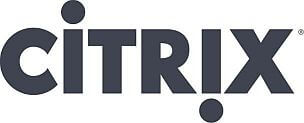Local Host Cache in Citrix XenApp and XenDesktop 7.12
Alexander Ervik Johnsen Citrix, LHC, Local Host Cache, XenApp, XenDesktop

To ensure that the XenApp and XenDesktop Site database is always available, Citrix recommends starting with a fault-tolerant SQL Server deployment, by following high availability best practices from Microsoft. (The Databases section in the System requirements article lists the SQL Server high availability features supported in XenApp and XenDesktop.) However, network issues and interruptions may result in users not being able to connect to their applications or desktops.
The Local Host Cache (LHC) feature allows connection brokering operations in a XenApp or XenDesktop Site to continue when an outage occurs. An outage occurs when:
- The connection between a Delivery Controller and the Site database fails in an on-premises Citrix environment.
- The WAN link between the Site and the Citrix control plane fails in a Citrix Cloud environment.
Local Host Cache is the most comprehensive high availability feature in XenApp and XenDesktop. It is a more powerful alternative to the connection leasing feature that was introduced in XenApp 7.6.
Although this Local Host Cache implementation shares the name of the Local Host Cache feature in XenApp 6.x and earlier XenApp releases, there are significant improvements. This implementation is more robust and immune to corruption. Maintenance requirements are minimized, such as eliminating the need for periodic dsmaint commands. This Local Host Cache is an entirely different implementation technically; read on to learn how it works.
The Local Host Cache ensures that connection Site-wide brokering operations will be able to continue (new and existing connections/sessions) even when the connection between your Delivery Controller (s) and the Site Database is down or has failure. (it also work for Citrix Cloud (CC)).
How it works

During normal operations:
- The principal broker (Citrix Broker Service) on a Controller accepts connection requests from StoreFront, and communicates with the Site database to connect users with VDAs that are registered with the Controller.
- A check is made every two minutes to determine whether changes have been made to the principal broker’s configuration. Those changes could have been initiated by PowerShell/Studio actions (such as changing a Delivery Group property) or system actions (such as machine assignments).
- If a change has been made since the last check, the principal broker uses the Citrix Config Synchronizer Service (CSS) to synchronize (copy) information to a secondary broker (Citrix High Availability Service) on the Controller. All broker configuration data is copied, not just items that have changed since the previous check. The secondary broker imports the data into a Microsoft SQL Server Express LocalDB database on the Controller. The CSS ensures that the information in the secondary broker’s LocalDB database matches the information in the Site database. The LocalDB database is re-created each time synchronization occurs.
- If no changes have occurred since the last check, no data is copied.
The following graphic illustrates the changes in communications paths if the principal broker loses contact with the Site database (an outage begins):

When an outage begins:
- The principal broker can no longer communicate with the Site database, and stops listening for StoreFront and VDA information (marked X in the graphic). The principal broker then instructs the secondary broker (High Availability Service) to start listening for and processing connection requests (marked with a red dashed line in the graphic).
- When the outage begins, the secondary broker has no current VDA registration data, but as soon as a VDA communicates with it, a re-registration process is triggered. During that process, the secondary broker also gets current session information about that VDA.
- While the secondary broker is handling connections, the principal broker continues to monitor the connection to the Site database. When the connection is restored, the principal broker instructs the secondary broker to stop listening for connection information, and the principal broker resumes brokering operations. The next time a VDA communicates with the principal broker, a re-registration process is triggered. The secondary broker removes any remaining VDA registrations from the previous outage, and resumes updating the LocalDB database with configuration changes received from the CSS.
In the unlikely event that an outage begins during a synchronization, the current import is discarded and the last known configuration is used.
The event log provides information about synchronizations and outages. See the “Monitor” section below for details.
You can also intentionally trigger an outage; see the “Force an outage” section below for details about why and how to do this.
Sites with multiple Controllers
The secondary brokers communicate with each other on a separate channel. They use an alphabetical list of FQDN names of the machines they’re running on to determine (elect) which secondary broker will be in charge of brokering operations in the zone if an outage occurs. During the outage, all VDAs re-register with the elected secondary broker. The non-elected secondary brokers in the zone will actively reject incoming connection and VDA registration requests.
If an elected secondary broker fails during an outage, another secondary broker is elected to take over, and VDAs will re-register with the newly-elected secondary broker.
Set-BrokerSite -LocalHostCacheEnabled $true -ConnectionLeasingEnabled $false
The above command, enables LHC and disables Connection Leasing.
The Get-Brokersite cmdlet provides the current state of LHC (whether its enabled or disabled)
To disable Local Host Cache and enable Connection Leasing, run the following command:
Set-BrokerSite -LocalHostCacheEnabled $false -ConnectionLeasingEnabled $true
Check out the Citrix TechTalks To Go host Sean Donahue as he chats with Citrix expert Willian Charnell about New and Improved Host Cache in XenApp and XenDesktop 7.12. It´s finally back!
